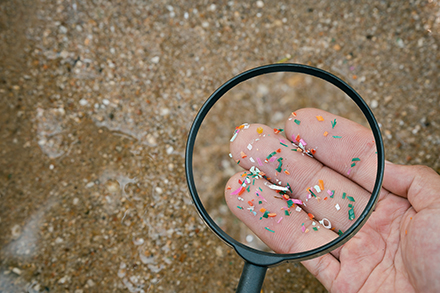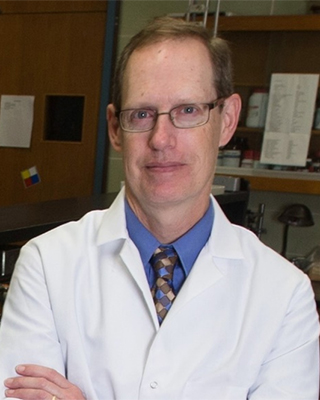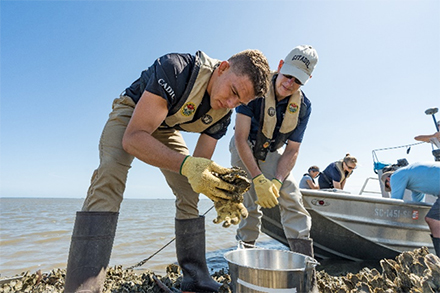By Maggie Wiener

Pollution is a worsening problem for the world's oceans. This pollution, composed of a complex mixture of toxic metals, plastics, manufactured chemicals, waste, and other compounds, is both widespread and poorly controlled. Approximately 80 percent of all marine pollution is plastic waste and often heavily concentrated near coasts. Researchers estimate that 10 million metric tons of plastic waste and microplastics - tiny plastic fragments smaller than five millimeters in size - enter the oceans each year and project that the total amount of plastic waste circulating the world's oceans will be 150 million tons by 2025 .
The Health Impacts of Marine Plastic Pollution
Adverse environmental impacts of plastic pollution occur at multiple levels, from the molecular to the ecosystem. While plastic pollution is widespread in the environment, its impacts fall disproportionately on certain populations.
In a new NIEHS-funded report, The Minderoo-Monaco Commission on Plastics and Human Health , Philip Landrigan, Ph.D., and other researchers at the Woods Hole Oceanographic Institute examine the intersections among plastic, social inequity, and environmental injustice. According to the Commission, health consequences of exposure to plastic pollution disproportionately affect the poor, minorities, marginalized populations, and people in the Global South. Groups at especially high risk of disease, disability, and death include people of color, Indigenous populations, children, among others. Populations living in island nations and states also experience a disproportionate burden of plastic pollution because significant amounts of plastics and microplastics wash up on their shores and adversely impact island aesthetics, fisheries, and water quality.
Additionally, ingestion of microplastics is greatest in fishing communities and in populations heavily dependent on a seafood diet. Consumption of contaminated fish and shellfish is a significant route of human exposure to marine microplastics and their chemical contaminants. Microplastics may be ingested by filter-feeders, such as oysters and mussels, and then consumed by humans. The greatest risk of human exposure, however, is associated with consumption of whole, small fish, like sardines.
Plastic and microplastic exposure can cause a host of harmful health impacts, which are not yet fully understood. According to the Minderoo-Monaco Commission, at every stage of their life cycle, plastics and microplastics can cause disease, disability, and contribute to premature death. The commission researchers suspect that ingested microplastics impact the colon and small intestine, cell proliferation and cell death, chronic inflammation, and immunosuppression in humans. Microplastics may act as vectors that transport toxic chemicals and bacterial pathogens into tissues and cells. Toxic chemicals added to plastics can disrupt endocrine function and increase risk for premature births, neurodevelopmental disorders, infertility, obesity, cardiovascular disease, and cancers.
The report concludes that current patterns of plastic production, use, and disposal are not sustainable and are responsible for significant harm to human and environmental health. The commission further supports that the world's nations adopt a global plastics treaty to curb plastic production and pollution.
Ongoing Research Focuses on the Effects of Plastics and Tire Particles on Marine Species

In addition to funding the Minderoo-Monaco Commission report, NIEHS, along with the National Science Foundation, also funds the Centers for Oceans and Human Health, which conduct research on marine-related health issues. John Weinstein, Ph.D., and others study tire wear particles and other microplastics, with particular focus on oysters.
"My role in the Center for Oceans and Human Health and Climate Change Interactions project is to examine the interface between microplastics, oysters, and human dietary exposures," said Weinstein. "Oysters are among the most vulnerable species to microplastic pollution since they are filter feeders-they filter water and take in whatever is in that water."
As part of his research, Weinstein and his research lab have examined the sources and fate of microplastics and their effects on oysters and shrimp. In earlier studies, they conducted a survey of the litter found in Charleston Harbor and discovered a high abundance of microplastic fragments to be tire particles .
"We found there are 7.5 tons of plastic debris in Charleston Harbor," Weinstein continued. "This led us to look at how plastic litter contributes to the larger microplastic problem. The most impactful finding was that, amongst the microplastic debris, we found tire particles, often in high concentrations."

Weinstein noted that in Charleston Harbor, anywhere from 20% to 40% of microplastic debris consists of tire particles, and at some locations it is more than 90%.
In another study on tire particles and oysters , Weinstein and his lab researched the accumulation and depuration -the process of cleaning out or removing contaminants - of microplastics, including tire particles, in oysters. They found that oysters accumulated tire particles at a faster rate than they do other microplastics, and that 44 hours of depuration only reduces the microplastic load in oysters by about half.
"The FDA guideline for shellfish contaminated with pathogenic organisms is a 44-hour depuration period," Weinstein noted. "There are no current guidelines for depuration of microplastics; however, a 44-hour time period is not long enough to depurate microplastics in oysters."
In addition to his research on oysters and tire particles, Weinstein has also collaborated with Leslie Hart, Ph.D. and another NIEHS grantee at the College of Charleston, on microplastic exposure in bottlenose dolphins . In this study, the researchers screened for plastic ingestion among free-ranging dolphins in Sarasota Bay, Florida. Researchers detected suspected microplastic particles in all samples from seven live bottlenose dolphins. The most common types of particles were transparent films, white foams, and fibers.
Weinstein hopes to continue researching the effects of microplastics and tire particles. He would also like to factor in climate change impacts when researching particle-accumulation rates in oysters. While increasing temperatures may speed up filtration, it is unclear how they may affect the rates of uptake, accumulation, and even depuration in oysters.
"Since we now know how many microplastics and tire particles are in oysters along the South Carolina coast, I would like to broaden my research to include other shellfish species to see how widespread this problem is," commented Weinstein.


